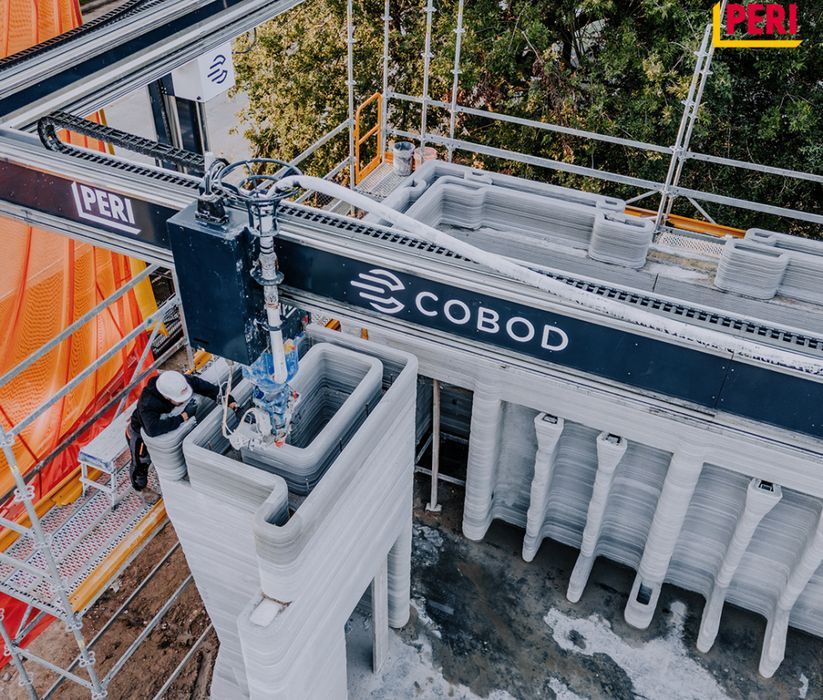
Construction 3D printing should eventually be a massive business, but when, exactly, will this occur?
Adoption of a technology is always a problematic matter, because it requires hitting a number of factors before users realize it’s something they should be doing.
We’ve seen this adoption lifecycle already occur in other 3D print technologies, including aerospace’s use of metal 3D printing. That took multiple years, risky ventures and demonstrations before everyone realized it was truly the way forward for that industry. Today we find the use of 3D printing in aerospace basically required for many types of components, with more coming online every week.
That transformation has yet to occur in the new world of construction 3D printing.
What are the factors required for adoption? Let me show you my list:
Functionality
The technology has to actually work. While there have been numerous questionable ventures in the construction 3D print space in the past, today’s players are mostly rational actors that do provide proper tech.
Most of the construction 3D print players offer some form of robotic concrete extrusion technology, which is able to quickly build concrete foundations and walls. By combining this with some conventional construction methods, complete buildings can be built. I’d say the technology is there today, although only for concrete portions of structures.
Cost
No buyer will consider construction 3D printing unless it is cost effective. There are currently multiple views on this subject. In some cases, the use of construction 3D printing could be more expensive than using normal approaches. But in other scenarios it could be less expensive.
The key here, I believe, is the building designs involved. For any semi-complex designs it would certainly be far more effective to do so using construction 3D printing. If you’re just building plain old square buildings, then it may be cheaper to use regular methods.
This effect was also seen in polymer 3D printing, where buyers would say “why would I 3D print my part when I can just make it cheaper with my old way?”
Of course, the transformation occurs when the buyer realizes they can make DIFFERENT parts that would be unachievable with old methods. That’s what happened in aerospace, but has yet to happen in construction.
This may require changing people’s attitudes towards building design, and also perhaps new CAD tools to easily design complex structures that would be best made using construction 3D printers.
Availability
You can’t buy something unless it is for sale, and that’s true with construction 3D printers. In this space, the typical business model is for one party to design and build the printer, and another party to use it on actual construction jobs.
This is why you see many of the leading construction 3D printer manufacturers continue to partner with forward-thinking construction companies to build projects all over the world. The printer designers don’t know how to run construction projects, and the construction companies don’t know how to build a 3D printer.
At this time there are a vast number of construction companies, tens of thousands at least. Only a very slim percentage of them are currently experimenting with 3D printing. That is likely to change, as more construction companies eventually figure this out and begin contacting the construction 3D printer manufacturers.
Awareness
If something is highly functional, cost beneficial and is available, why isn’t it widely sold? There’s one more factor to consider, and it’s the most difficult one to overcome.
Both buyers and construction companies have to be aware that 3D printing is a possibility. Right now that’s not really happening, and I suspect the vast majority have never heard of the topic.
This is why the leading construction 3D printer companies have been performing ongoing demonstration projects in various areas. One recent example of this is COBOD’s new project with PERI (a large international construction company) in Texas, where they are attempting to build a 4000sf two-story home using construction 3D printing for the concrete portions and conventional construction methods for the rest.
The project is said to be the largest 3D printed building project in the United States yet attempted, which certainly could draw attention in the media and thus grow awareness of the technology.
When will this technology become commonplace? We are clearly still at the very early part of the learning curve, and it’s likely to take several years and many more demonstrations before that happens. However, somewhere in-between forward-thinking investors will figure this out and shower the leading companies with cash to bring up their capacity.
